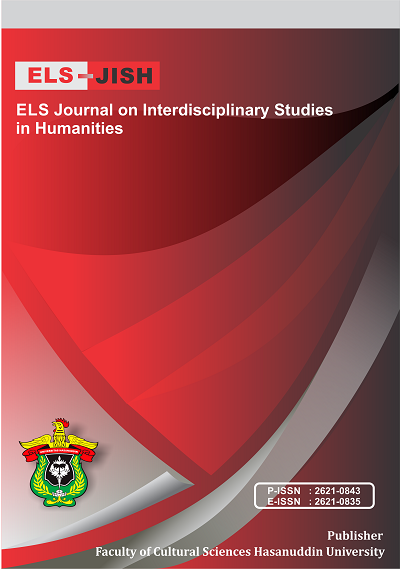Who was Nyerere? The Mythical Recreation of Nyerere the Person in Banyakyusa Narratives
DOI:
https://doi.org/10.34050/els-jish.v3i2.10111Keywords:
Nyerere, Banyakyusa, Myths, Mystical Powers, TanzaniaAbstract
Abstract
Asking about who Nyerere was is obviously a surprising option in this century especially when we pay a particular attention to literatures devoted to his life and career. A number of politicians and scholars have written in length on Nyerere’s individual life and his political career. However, the question remains significant on the sense that irrespective of the Nyerere we know from politicians and academicians’ perspectives, little is known about him in the perceptions and beliefs of local Tanzanians. By looking at the Banyakyusa process of mythmaking about Nyerere, this qualitative study examines images and symbols associated with Nyerere’s nature. The paper interrogates Banyakyusa voice, beliefs and point of views on Nyerere’s personality embedded in their mythical narratives. To Banyakyusa, as the paper establishes, Nyerere was endowed with supernatural powers including immense mystical abilities by which he was able to foresee the future and to protect himself against his enemies. Also, Nyerere was blessed with inborn intelligent abilities. The abilities made him be able to train himself various skills such as reading, writing and counting. In general, the recreation of Nyerere’s personality in Banyakyusa myths reflects Banyakyusa traditional beliefs on powers and abilities of their traditional leaders.
References
References
"Tribute". (2000). Tribute to Mwalimu Julius Nyerere in South African parliament. Review of African Political Economy, 27(No 83), 95-97.
Acheson-Brown, D. G. (2001). The Tanzania invasion of Uganda: A just war? International Third World Studies Journal and Review, 12 1-11.
Besier, G. (2014). Does national mythmaking end at the border? Kirchliche Zeitgeschichte, 27(2), 233-243.
Brennan, J. R. (2015). Julius rex: Nyerere through eyes of his critics. In M. A. Fouere (Ed.), Remembering Nyerere in Tanzania: History, Memory, Legacy (pp. 143-169). Dar es Salaam: Mkuki na Nyota Publishers Ltd.
Douglas, W. W. (1966). Meaning of “myth” in modern criticism. In J. B. Vickery (Ed.), Myth and Literature: Contemporary Theory and Practice (pp. 120-128.). Lincoln: University of Nebraska Press.
Finnegan, R. (1970). Oral literature in Africa. Oxford: Oxford University Press.
Fouere, M.-A. (2015a). "Julius Nyerere": The man, the world, and the order of discourse. In M.-A. Fouere (Ed.), Remembering Nyerere in Tanzania: History, Memory, Legacy. (pp. 3-32). Dar es Salaam: Mkuki na Nyota Publishers Ltd.
Fouere, M.-A. (2015b). Julius Nyerere, ujamaa and political morality in contemporary Tanzania. In M.-A. Fouere (Ed.), Remembering Nyerere in Tanzania: History, Memory, Legacy (pp. 33-61). Dar es Salaam: Mkuki na Nyota Publishers Ltd.
Friedland, W. H. (1960). Some urban myths of East Africa. Myths in modern African. Paper presented at the The Fourteenth Conference Proceedings of the Rhodes-Livingstone Institute for Social Science.
Frye, N. (1957). Anatomy of criticism. Princeton and Oxford: Princeton University Press.
Guerin, W. L., Labor, E., Morgan, L., Reesman, J. C., & Willingham, J. R. (2005). A handboook of critical approaches to literature: Fifth Edition (5 Ed.). Newyork, Oxford: Oxford University Press.
He, Y. (2006). National mythmaking and the problems of history in Sino-Japanese relations. In L. P. Er (Ed.), Japan's Relations with China: Facing a Rising Power (pp. 69-91). London and New York: Routledge, Taylor and Francis Group.
Ishumi, A. G., & Maliyamkono, T. L. (1995). Education for self-reliance. In C. Legum & G. Mmari (Eds.), Mwalimu: The Influence of Nyerere (pp. 46-60). London, Dar es Salaam and Trenton: British-Tanzania Society.
Jaja, J. M. (2013). Myths in African concept of historical reality. An International of Arts and Humanities, 6(2), 9-14.
Johnson, R. W. (2000). A flawed hero. The National Interest(60), 66-75.
Kaunda, K. (1985). A personal tribute. In British-Tanzania (Ed.), The Nyerere years: Some personal impressions by his friends (pp. 10-12). London: The Britain-Tanzania Society.
Kiyimba, A. (1998). The ghost of Idi Amin in Ugandan literature. Researches in African Literatures, 29(1), 124-138.
Kumar, R. (2011). Research methodology: A Step-by-Step Guide for Beginners (3rd ed.). Los Angels, London, New Delhi, Singapore, Washington DC: Sage Publications Ltd.
Mbiti, J. S. (1991). Introduction to African religion (2 ed.). Nairobi, Kampala, Dar es Salaam: East African Educational Publishers Ltd.
Mbwimbo, P. D. M. (2016). Mlinzi mkuu wa Mwalimu Nyerere. Dar es Salaam: Mkuki na Nyota.
Mesaki, S., & Malipula, M. (2011). Julius Nyerere's influence and legacy: From a proponent of familyhood to a candidate for sainthood. International Journal Of Sociology And Anthropology, 3(3), 93-100.
Mpangala, G. P., & Mawazo, R. R. (2015). Historia Ya mkombozi Mwalimu Julius Kambarage Nyerere. Iringa: TUKI.
Msekwa, P. (N.D). Tanganyika's independence struggle. First Magazine, 40-42.
https://www.juliusnyerere.org/uploads/nyerere_lifetime_legacy_pius_msekwa.pdf
Mwijage, L. S. (1994). The dark side of Nyerere's legacy. London: Adelphi Press.
Nasongo, J. W., & Musungu, L. L. (2009). The implication of Nyerere's theory of education to contemporary education in Kenya. Educational Research and Review, 4(4), 111-116.
Phillips, K. D. (2015). Nyerere's ghost: Political filiation, paternal discipline and the construction of legitimacy in Tanzania. In M. A. Fouere (Ed.), Remembering Nyerere in Tanzania: History, Memory, Legacy (pp. 93-126). Dar es Salaam: Mkuki na Nyota Publishers Ltd.
Ritchie, D. A. (2003). Doing oral history: A practical guide. Oxford: Oxford University Press.
Seger, L. (2003). Creating the myth. from Bedford/St. Martins
Sturmer, M. (1998). The media history of Tanzania. Ndanda: Ndanda Mission Press.
Trubshaw, B. (2003). Explore mythology. Loughborough: Heart of Albion Press.
Wilson, M. (1959). Communal rituals of the Nyakyusa. London, New York, Toronto: Oxford University Press.
Wilson, M. (1960). Myths of precedence. Paper presented at the Myth in Modern Africa: The Fourteenth Conference Proceedings of Rhodes-Livingstone Institute for Social Research, 1960.
Wilson, M. (1976). Zig-Zag change. Africa: Journal of the International African Institute, 46(4), 399-409.






